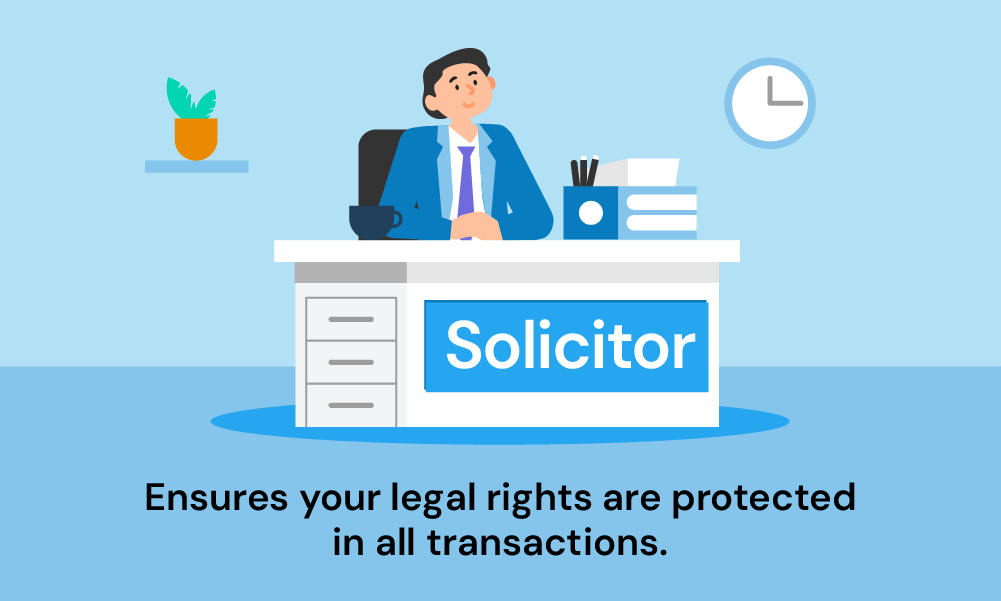- What is a Let To Buy Mortgage And How Does It Work?
- Who Is Eligible?
- Does Rental Income Matter For Let To Buy Mortgages?
- How Much Equity Do I Need?
- Do I Need To Pay Stamp Duty With Let To Buy?
- Let To Buy Mortgage Rates and Lenders
- The Pros and Cons of Let To Buy Mortgages
- How To Apply For A Let To Buy Mortgage?
- Alternatives and Other Options
- Key Takeaways
- The Bottom Line
Let-To-Buy Mortgages Explained: The Essential Guide

Many people in the UK are turning their current homes into rental properties while buying new ones.
If this idea appeals to you, let-to-buy mortgages could be your answer. This option lets you keep your home and earn from it, giving you the freedom to move.
This quick guide is here to show you how it’s done, making the process clear and simple. Let’s get started!
What is a Let To Buy Mortgage And How Does It Work?
A let-to-buy mortgage is a way to buy a new home to live in by turning your current home into a rental property.
Here’s the breakdown:
- You rent out your current home to tenants.
- You get a special mortgage on your current home that allows you to do this (called a buy-to-let mortgage).
- You use the money you get from renting out your old home, along with a new residential mortgage, to buy a new place to live.
In this way, you can hold onto your old property while using it to help afford your new one.
Who Is Eligible?
Let-to-buy mortgages essentially mean you’re juggling two loans: (1) Buy to let mortgage; and (2) a residential mortgage. So the criteria can be quite specific. Here’s what you need to keep in mind:
Buy-to-Let Mortgages
- You may need to prove a minimum yearly income, usually in the range of £15,000 to £25,000.
- You need a good amount of equity in your current home, usually between 25% and 40%, though lenders differ.
- The rent you plan to charge should easily cover your mortgage payments, typically needing to be 125% to 145% of the mortgage amount. A letting agent approved by ARLA might need to verify this.
- Proof that you’re purchasing another property to live in is required.
- You must show that your current home will be rented out and not up for sale.
- Usually, Let to Buy mortgages are interest-only, so you’ll need a plan for paying off the loan eventually.
Your New Residential Mortgage
- Your income is crucial, with many lenders looking for a minimum of around £20,000, plus passing other affordability checks.
- A smaller deposit, even as little as 5%, can start your residential mortgage, but more substantial deposits secure lower interest rates.
- A good credit history is essential as Let to Buy is specialised, making lenders more cautious.
- Age might also play a role, with most lenders preferring borrowers aged between 25 and 75.
Each lender’s terms can differ, so it’s wise to shop around or chat with a mortgage advisor to find the best fit for your circumstances.
Does Rental Income Matter For Let To Buy Mortgages?
Yes, rental income is crucial for Let to Buy mortgages. Lenders assess if the rent you’ll earn covers the mortgage payments, typically looking for rent to be 125-145% of the mortgage repayments.
This ensures the mortgage is affordable based on the income generated from letting your current home.
How Much Equity Do I Need?
To go forward with a Let to Buy mortgage, you’ll need a deposit from your current home’s equity, usually 25% or more. This chunk of equity is vital as it secures your new residential mortgage.
If you’re unsure about your home’s rental income potential, use our handy rental yield calculator. It can give you a clearer picture of what you might earn from letting your property.
Do I Need To Pay Stamp Duty With Let To Buy?
Yes, you’ll likely need to pay stamp duty.
This is because you’re buying an additional property, which incurs a 5% stamp duty surcharge in England and Northern Ireland.
The exact amount depends on the property’s value and current stamp duty thresholds. So, it’s a good idea to factor this into your budgeting from the start.
Let To Buy Mortgage Rates and Lenders
As we’ve discussed, with Let-to-Buy, you deal with two mortgage rates: one for renting out your current place and another for your new home.
Buy to Let mortgages usually have higher rates, than residential mortgages, because lending for rentals is seen as riskier.
Your actual rate will depend on things like your financial standing, the property’s value, and the expected rental income. Moreover, you have the option to choose from fixed-rate, variable, or tracker mortgages.
Let to Buy is quite specialised, so finding the right lender can be difficult. While some big names like Nationwide are in the mix, a mortgage broker can be your best bet for navigating this niche market.
They have the know-how to match you with lenders suited to your unique situation, ensuring you get the best possible deal on both fronts.
The Pros and Cons of Let To Buy Mortgages
Here are the pros and cons to help you decide if this is the right path for you:
Pros
- You can move to a new home without selling your current one.
- Potential to earn rental income from your existing property.
- Keep the option to return to your original home in the future.
- Can be a stepping stone to property investment.
- Might benefit from property value increases over time.
Cons
- Managing two mortgages can be financially demanding.
- Being a landlord comes with responsibilities and legal requirements.
- Rental income is not guaranteed; there may be periods without tenants.
- Higher mortgage rates for let-to-buy compared to standard residential mortgages.
- Potential for complex tax implications, especially with stamp duty.
- In a declining housing market, there’s a risk of negative equity on both properties, increasing financial strain.
How To Apply For A Let To Buy Mortgage?
First off, chatting with a mortgage advisor is wise. They’re there to guide you through, ensuring this move suits you. Here’s what they can help with:
- Explaining the ins and outs of Let to Buy mortgages.
- Sorting out your finances to see where you stand.
- Giving you a clear picture of what you can afford and how much rent you might earn.
- Make sure you tick all the boxes for the lender’s criteria.
- Collecting all the necessary paperwork.
- Finding the best lender for your needs.
Once you’re all set with your broker, here’s what happens next:
- Find the Right Lender – With your broker’s advice, pick a lender that fits your needs.
- Send in Your Application – You’ll need to fill out forms with details about you and your properties.
- Get Your Property Valued– The lender will want to see how much your current home is worth and how much rent it could make.
- Look Over the Offer – If the lender approves your application, they’ll send you a mortgage offer. Read it carefully to make sure everything’s right.
- Finish Up with a Solicitor – You’ll need a solicitor to sort out the legal bits, making sure you’re all set to move forward with your Let to Buy mortgage.

Alternatives and Other Options
When considering a Let to Buy mortgage, it’s worth looking at other options too. Here are some alternatives:
- Consent to Let – This is where your current lender allows you to rent out your property for a short time. It’s handy if you plan to move back later.
- Standard Buy to Let – Ideal if you’re buying a property specifically to rent it out. This doesn’t involve your current home.
- Selling and Downsizing – Selling your current home and buying a smaller, cheaper one could free up cash and reduce your financial burden.
- Equity Release – For those over 55, releasing equity from your home can provide a lump sum or additional income, without the need to sell.
- Remortgaging – Switching your current mortgage to get better terms or releasing equity to fund your next purchase, without renting out your current home.
Choosing between these depends on your situation. If you’re not keen on being a landlord or managing two mortgages, selling or downsizing might suit you better. If you’re temporarily relocating, consent to let could be a simpler solution.
Each option has its pros and cons, so consider what fits your lifestyle, financial goals, and the level of commitment you’re comfortable with.
Key Takeaways
- A Let-to-buy mortgage allows you to buy a new home while turning your current one into a rental property. You’ll need two mortgages: a Buy to Let for your old home and a residential mortgage for your new one.
- To qualify, you’ll need at least 25% equity in your current home, your rental income should cover at least 125% of your mortgage, and meet the lender’s specific affordability criteria.
- Stamp duty is payable when buying your new home under a Let to Buy scheme due to it being an additional property.
- Let to Buy mortgage rates can be higher for your rental property, and choosing the right lender is essential.
- Alternatives to consider include Consent to Let, standard Buy to Let, selling and downsizing, equity release, or remortgaging, depending on your circumstances and goals.
The Bottom Line
Let-to-buy mortgages can be complex, so preparation is key. Before diving in, you need to have a solid grasp of your financial situation.
Consider these questions:
- Will your rent cover your mortgage and other expenses?
- What’s your plan if your property is unoccupied?
- And are you clear on the tax side of things and what it means to be a landlord?
To get a clearer picture, talking to a mortgage broker is a smart move. They’re not just there to give you a heads-up on potential rental income and whether the numbers stack up. They can also guide you through your responsibilities as a landlord.
Moreover, they’re your go-to for finding lenders who offer the right terms and rates for your circumstances.
If you’re thinking about Let to Buy, simply, drop us a line. We can put you in contact with a reliable mortgage broker who specialises in Let to Buy mortgages, making your journey smoother.
Get Matched With Your Dream Mortgage Advisor...

Frequently asked questions
Is let-to-buy a good idea?
Whether let-to-buy is a good idea depends on your financial situation, goals, and readiness to manage two properties. If the rental income covers costs and you’re up for being a landlord, it might work well for you.
Can I remortgage if I have a let-to-buy agreement?
Yes, you can remortgage under a let-to-buy agreement. It might be a way to get better terms on your current mortgage or release equity. Just make sure the new deal fits with your let-to-buy arrangement and that you meet the lender’s criteria.




